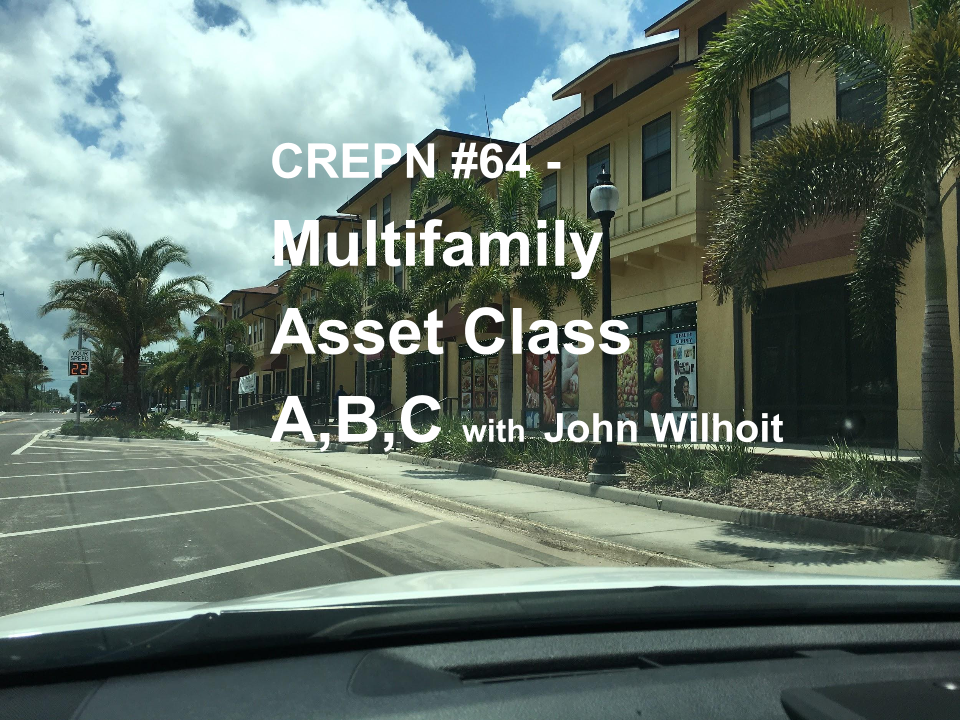
28 Oct CREPN #64 – Multifamily Asset Class A,B,C with John Wilhoit
Multifamily asset class for investors are graded by letters from A,B,C, and All Other. John Wilhoit is an author, investor, asset manager, multifamily expert and a returning guest. Check out John’s prior appearance CREPN #27 to learn about market size. In this episode, John breaks down the difference between the asset class grades and the characteristics of each. [x_audio_embed][/x_audio_embed] Focused growth requires that investors chose an asset class when developing their commercial real estate investment strategies. The designations are primarily reference points for institutional investors investing in properties with 150 – 250 units. There are exceptions. In markets with strong demand, smaller boutique properties with fewer units can be considered class A for the marketplace, but would be regularly excluded from institutional investor consideration. The factors that define the property class designation include age of the property, amenities offered, rents charges, level of service, safety of the neighborhood, uniformity of the property and more. Class A properties
- Located in communities of 50,000 and more.
- The newest property in the area.
- Features will include the greatest level of amenities in the marketplace; concierge service, dry cleaning pickup, vehicle service, etc.
- Construction finishes will be of the highest materials currently in use, “Best in Class”.
- Rents will be the highest in the marketplace.
- Properties are located in desirable neighborhoods.
- Older properties that are located in a higher desirability location that command a higher rent are referred to as “legacy” properties.
- Age of properties are twenty years old and older.
- Older properties that are redeveloped even with the highest level of finishes will be considered “B”, or “Legacy” property
- Properties are well maintained and have little to no deferred maintenance.
- Rents will vary depending on the market.
- Located in a safe and desirable neighborhoods.
- Tenants tend to be more salaried professionals and more stable income.
- Turnover will be less than that of a “C” class property.
- Features will vary based on the ownership.
- This is “Workforce” housing.
- Tenants are normally hourly workers and live pay check to pay check.
- Located in safe neighborhoods.
- Tenants credit tends to be marginal.
- Turnover tends to be higher
- Properties will have deferred maintenance needs.
- Lower rents, keep these properties in demand
- High crime
- 4 story walkup
- Non conforming floor plan or unit configuration
- Lower rent
- Lower caliber of tenant

